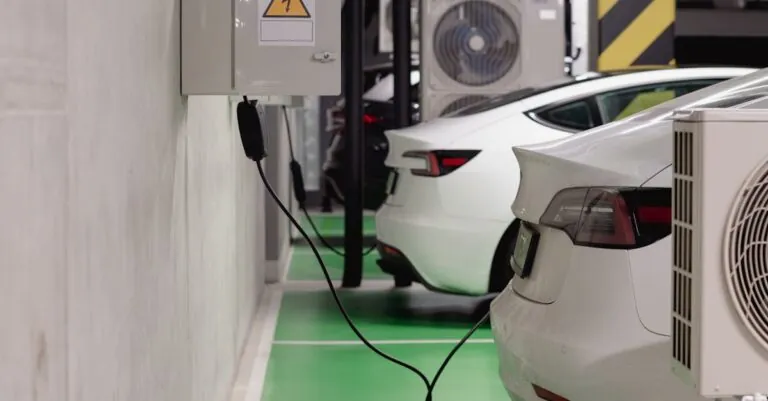Imagine a world where creativity knows no bounds, where you can print everything from a coffee cup to a fully functional robot, all in one go. Welcome to the fascinating realm of multi-material 3D printing. This innovative technology isn’t just a fancy buzzword; it’s a game changer that’s reshaping industries and sparking imaginations everywhere.
Table of Contents
ToggleOverview of Multi-Material 3D Printing
Multi-material 3D printing enables the creation of objects using different materials in a single print job. This technology enhances design possibilities, allowing for complex geometries and varied material properties. Industries, including automotive and healthcare, benefit from innovations such as lightweight components and personalized medical devices.
Flexible materials can be combined with rigid materials, creating objects that showcase strength and adaptability. Inkjet printing, Fused Deposition Modeling (FDM), and stereolithography are methods employed in multi-material 3D printing. Each method contributes unique capabilities, offering solutions for diverse applications.
Enhanced functionality arises from integrating features such as electrical components or embedded sensors directly into the printed structure. Such design flexibility fosters advancements in prototyping and product development, reducing lead times substantially. Combining materials allows for better performance characteristics, resulting in outputs that outperform traditional methods.
For instance, a multi-material 3D printer could create a shoe with varying degrees of stiffness across the sole, improving comfort and functionality. Use cases also include the production of custom prosthetics, which incorporate both soft and hard materials for optimal patient fit and performance.
The global market for multi-material 3D printing continues to expand, driven by a growing demand for customized solutions. As technologies evolve, cost reductions and improvements in printing speed enhance accessibility. Material variety will further expand the applications available in manufacturing and design sectors.
Benefits of Multi-Material 3D Printing
Multi-material 3D printing offers significant advantages, enhancing design capacity and functional capabilities. This technology allows the incorporation of various materials within a single object, leading to innovative solutions.
Enhanced Design Flexibility
Design flexibility reaches new heights with multi-material 3D printing. Creators can experiment with different materials like plastics, metals, and ceramics all at once. Complex geometries become attainable, enabling intricate designs that single-material printing cannot achieve. Customized prototypes adapt to user preferences, increasing innovation while reducing wasted resources. Multi-material capabilities make producing items, such as flexible electronics or multi-textured consumer products, simpler. As a result, designers can push boundaries and explore novel applications.
Improved Functional Properties
Functional properties improve substantially by utilizing multiple materials in a single print. Combining rigid and flexible materials yields products that possess unique characteristics, such as resilience and adaptability. These enhanced properties benefit various industries, including automotive and healthcare. Cars may feature lightweight yet durable components that improve efficiency without sacrificing safety. Medical devices can achieve an ideal balance of comfort and function, accommodating individual patient needs. Advanced sensory and functional integrations within printed structures elevate overall performance, allowing for smarter applications in diverse settings.
Technologies Used in Multi-Material 3D Printing
Multi-material 3D printing leverages various cutting-edge technologies to enhance design and functionality. Different methods offer unique advantages tailored to specific applications.
Fused Deposition Modeling (FDM)
Fused Deposition Modeling uses thermoplastic materials during the printing process. This technology melts and extrudes filament layer by layer, creating complex shapes with varying properties. FDM enables the integration of rigid and flexible materials in a single print, offering robust solutions for industries such as automotive. Designers utilize FDM to produce lightweight components with strength and durability. Its accessibility makes FDM popular among hobbyists and professionals alike. Additionally, the technology supports a wide range of materials, including composites, which enhance performance characteristics.
Digital Light Processing (DLP)
Digital Light Processing utilizes light to cure liquid resin into solid objects layer by layer. This method excels in achieving high-resolution prints with intricate details. DLP printers offer fast layer curing, significantly reducing overall printing time. By integrating various resin types, designers create multi-material objects with distinct properties. The ability to combine different resins enables the production of parts that are both rigid and flexible. Industries like healthcare frequently apply DLP for producing customized medical devices. Furthermore, the technology’s precision supports intricate geometries, making it ideal for complex designs.
Applications of Multi-Material 3D Printing
Multi-material 3D printing offers diverse applications across various industries, enhancing design possibilities and functionality.
Aerospace Industry
In aerospace, multi-material 3D printing plays a crucial role in manufacturing lightweight components. It enables the creation of intricate parts that reduce overall aircraft weight, ultimately improving fuel efficiency. Designers can integrate different materials, combining metals for structural integrity and polymers for flexibility. This capability allows for the production of complex geometries that traditional manufacturing methods struggle to achieve. Additionally, prototypes can be developed rapidly, streamlining the testing process. Innovations like these enhance performance characteristics, making aircraft safer and more economical.
Medical Devices
Multi-material 3D printing significantly impacts the medical device sector by enabling personalized products that cater to specific patient needs. This technology allows manufacturers to create custom implants and prosthetics tailored to individual anatomy, enhancing comfort and functionality. Combining materials provides unique features, like integrating soft surfaces with hard structures. Medical professionals benefit from rapid prototyping, allowing for quicker iterations and improved designs. The ability to embed sensors directly into devices further advances patient monitoring capabilities. Overall, multi-material printing revolutionizes the way medical devices are conceived and produced.
Challenges in Multi-Material 3D Printing
Multiple challenges arise in multi-material 3D printing. These hurdles can affect the effectiveness and adoption of this technology in different industries.
Material Compatibility
Material compatibility stands as a significant concern in multi-material 3D printing. Certain materials may not bond well with each other, leading to weak points in printed objects. For instance, combining flexible thermoplastics with rigid composites may result in inadequate adhesion. Incompatibility can also affect the thermal and mechanical properties, leading to performance issues. Evaluating materials’ characteristics before printing ensures better integration and functionality. Research on new composite materials may help overcome these challenges, fostering innovation in this sector.
Post-Processing Requirements
Post-processing requirements add another layer of complexity to multi-material 3D printing. These procedures often include curing, cleaning, or removing support structures, which can be time-consuming. Effective post-processing differs based on the materials used, impacting overall production efficiency. Complex geometries may require additional care during post-processing to maintain structural integrity. Employing advanced techniques and automated solutions can streamline these processes, enhancing productivity. Adapting post-processing methods further ensures high-quality end products, crucial for commercial applications.
Conclusion
Multi-material 3D printing stands at the forefront of innovation across multiple industries. Its ability to combine diverse materials opens up new avenues for creativity and functionality. As businesses continue to explore this technology, the potential for customized solutions grows exponentially.
The advantages of enhanced design flexibility and improved product characteristics make it a game-changer in sectors like automotive and healthcare. While challenges such as material compatibility and post-processing remain, ongoing advancements promise to streamline these issues.
As the market for multi-material 3D printing expands, it’s clear that this technology will play a pivotal role in shaping the future of manufacturing and design. The journey of exploration and innovation has just begun, offering exciting possibilities for what’s to come.




